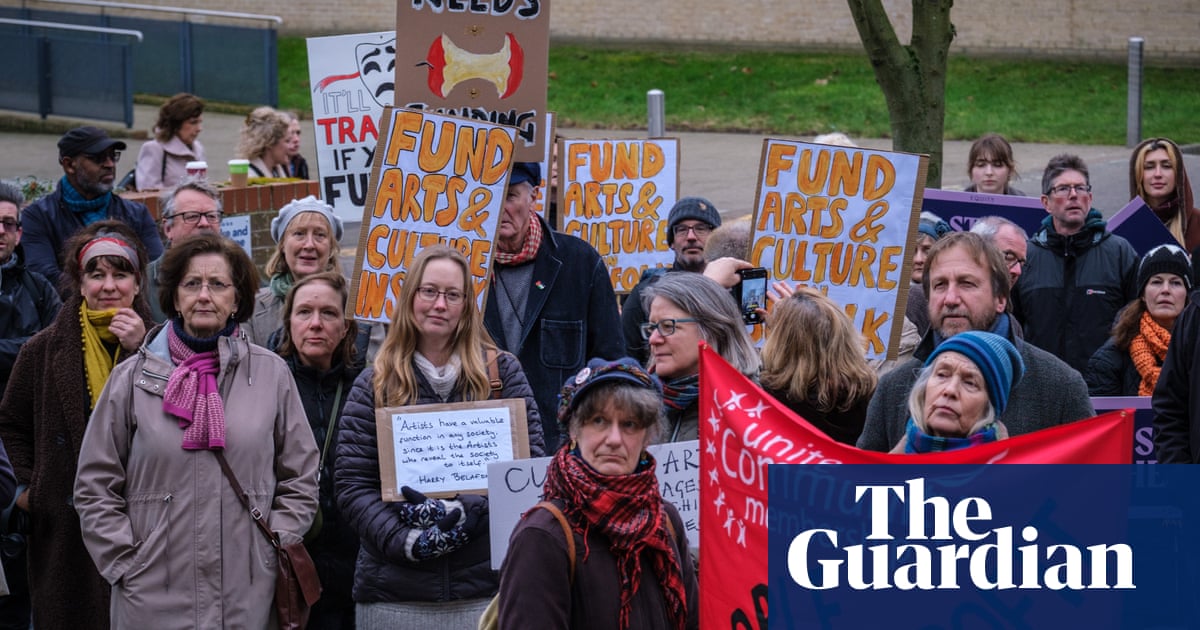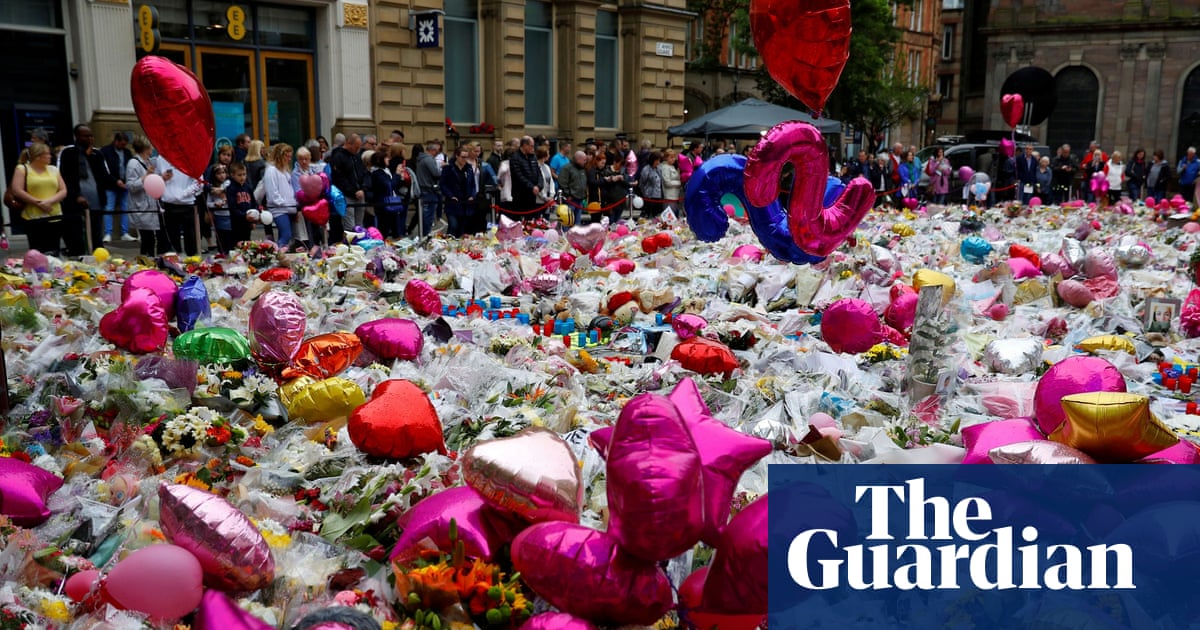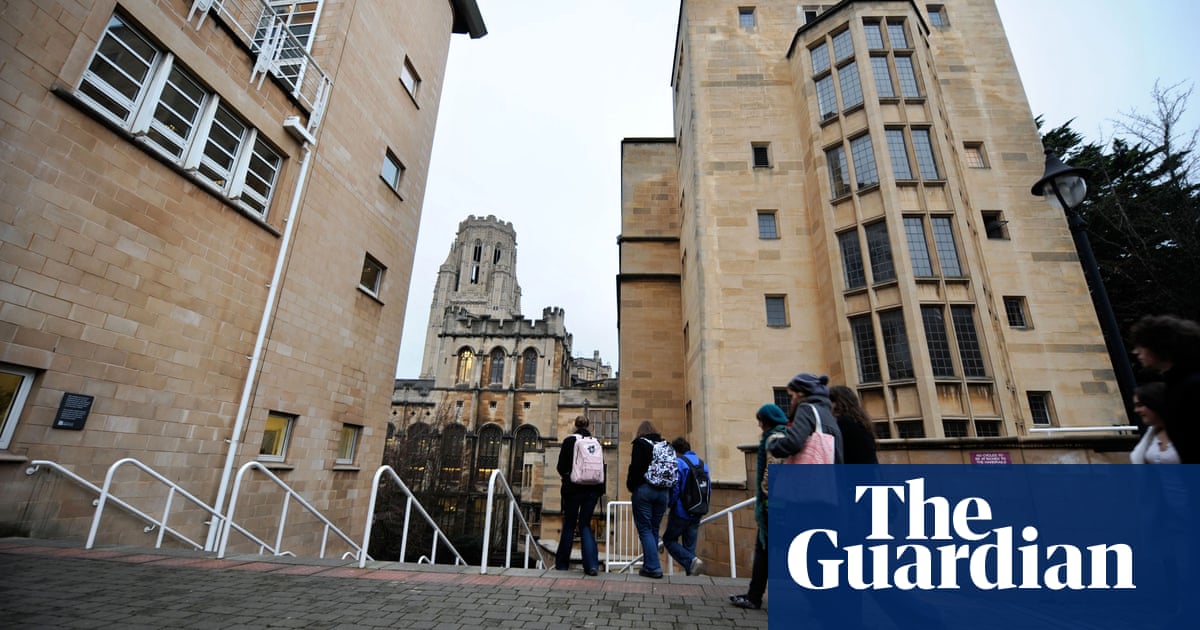
As a chant of “Stop the cuts! Stop the cuts! Stop the cuts!” echoes off the exterior of Suffolk county council’s Endeavour House, protesters gather to rally against seismic changes to the way the arts is funded in the county.
The 100% cut to Suffolk’s arts funding sent shock waves not just through the county but the country when it was announced at the start of January. Some called it a “national emergency” that could usher in a wave of closures as arts institutions can no longer afford to stay open.
Outside Endeavour House there are the usual union representatives and opposition councillors, but there are also young fashion designers, business consultants and Windrush activists who want to make their voices heard.
“This system is broken,” says Max Thomas, who helps to run the Ipswich Windrush Society. He is protesting because he thinks “these decisions are stopping talent coming through” by removing grassroots funding.
The earlier outcry over the cuts – powered in part by support from Andrew Lloyd Webber and Dame Judy Dench – did have an impact. The organisers of Tuesday’s protest had to confirm it was still going ahead after the council announced it wouldn’t be cutting the funding entirely, with news it secured an additional £7.2m from the government.
But that reprieve came with strings attached. It wasn’t a reversal: instead of nine institutions sharing £528,000 of core funding, now a £500,000 pot would be open for applications from all of Suffolk’s arts organisations after the 2024-25 financial year, with no guarantee it would be repeated in further years. The council says it needs to find an extra £74m to protect the county’s most vulnerable adults and children and that there will be “difficult financial decisions” ahead.
One of the handmade placards at the protest was of an apple chomped down to its core, with the words “Arts Need [Core] Funding”. For many organisations, the image is a perfect metaphor for the council’s new funding pledge: their share of the money is being nibbled away as more mouths try to get a bite.
Joanne Ooi, a festival organiser who helped arrange the protest, said: “There will be thousands of applicants for [the new money]. It’ll be divided up to extremely small pieces and an ad-hoc patchwork of short-term projects. They could have easily reinstated the original funding but they don’t take the long-term view.”
For Ooi, the future of the arts in Suffolk is looking murky because of a lack of political leadership. “There’s this philosophy in place which accepts that these institutions can go defunct,” she said. “It’s ugly.”
The situation in Suffolk mirrors the national one. Since 2010, arts development and support spending has been almost halved, from £3 to £1.52 a person. Theatres and public entertainment have been cut 38%, while council spending on heritage across England has fallen from 96p to 67p a head.
Council arts and culture spending in England
Net spending by category, per person (2022-23 prices)
The Guardian found 83% of council areas had cut their net spending on arts development, museums, theatres and galleries, and heritage since 2010-11. That is in addition to Arts Council funding being slashed by 30% during the start of the austerity era.
A short drive away in Stowmarket, Jenny Cousins, the director of the Food Museum, is one of the people most affected by the Suffolk cuts. She manages a 34-hectare (84-acre) site, which sits behind the Asda in the town centre and welcomes 70,000 visitors a year to experience all aspects of food – from growing to agriculture.
The council decision means the museum’s core funding of £102,500 – about 13% – is now in jeopardy. Cousins can’t say exactly what would have to go if they can’t replace the money but whether it is jobs or service – for example the 60-plus free school visits they do annually – something will have to give.
The core funding allows them to do what she calls “the unsexy stuff”. “It’s paying the insurance bill, paying the utility bill. It’s doing the cleaning, it’s doing the maintenance that keeps the historic buildings in decent condition.”
There’s also the knock-on effect to consider: the loss of core funding makes raising more money harder because it’s “an important marker of stability” for other funders. “Each year we have to put together a jigsaw of interlocking pieces of funding to enable us to stay open,” Cousins wrote in a blogpost when the cut was first announced. “Suffolk county council provides a critical piece which locks in others.”
Arts leaders in Suffolk like Cousins are worried the reprieve from the council will be ephemeral. As one speaker said during the protest: they “will be back out here again next year”, fighting off yet more cuts.












